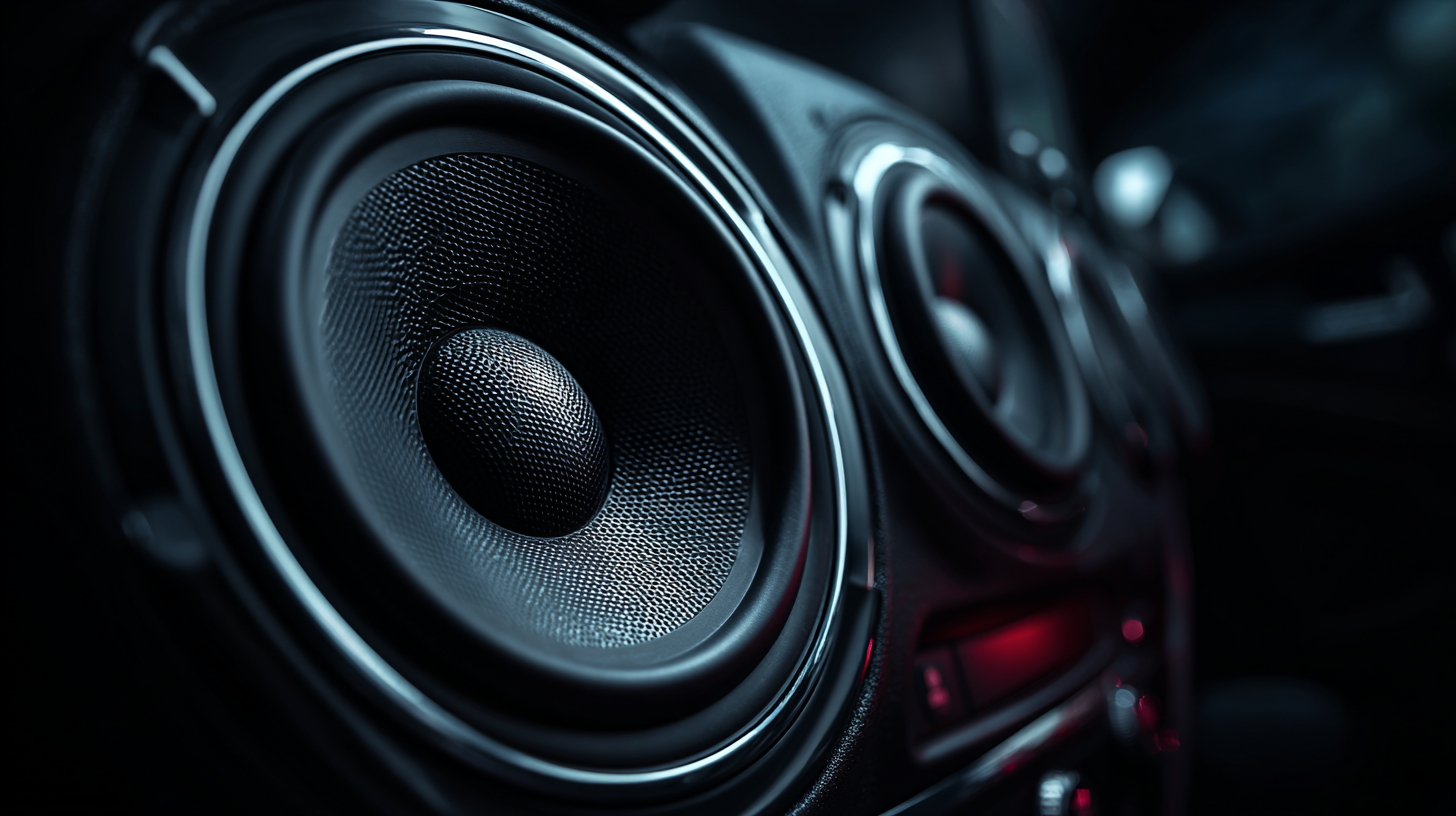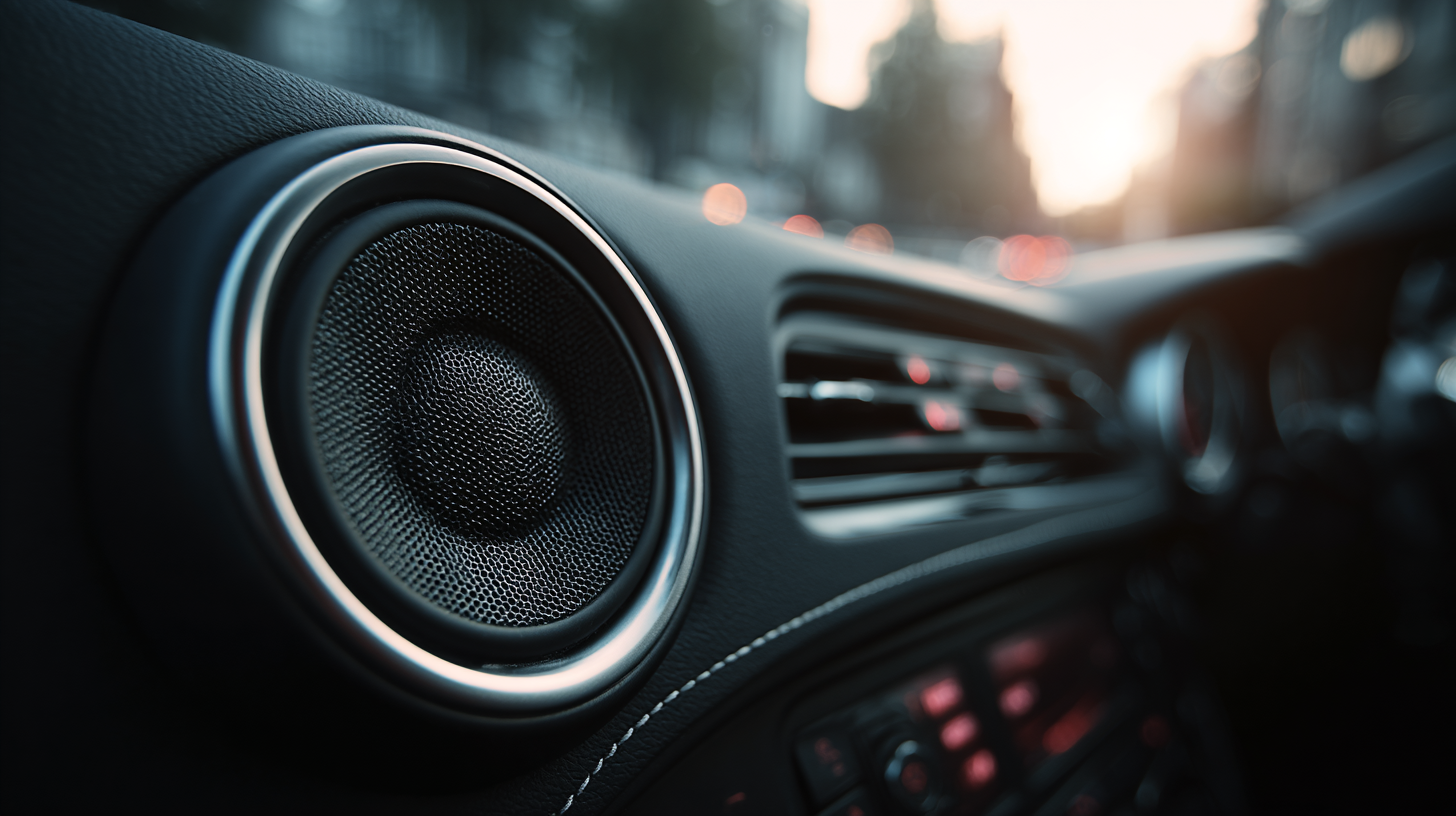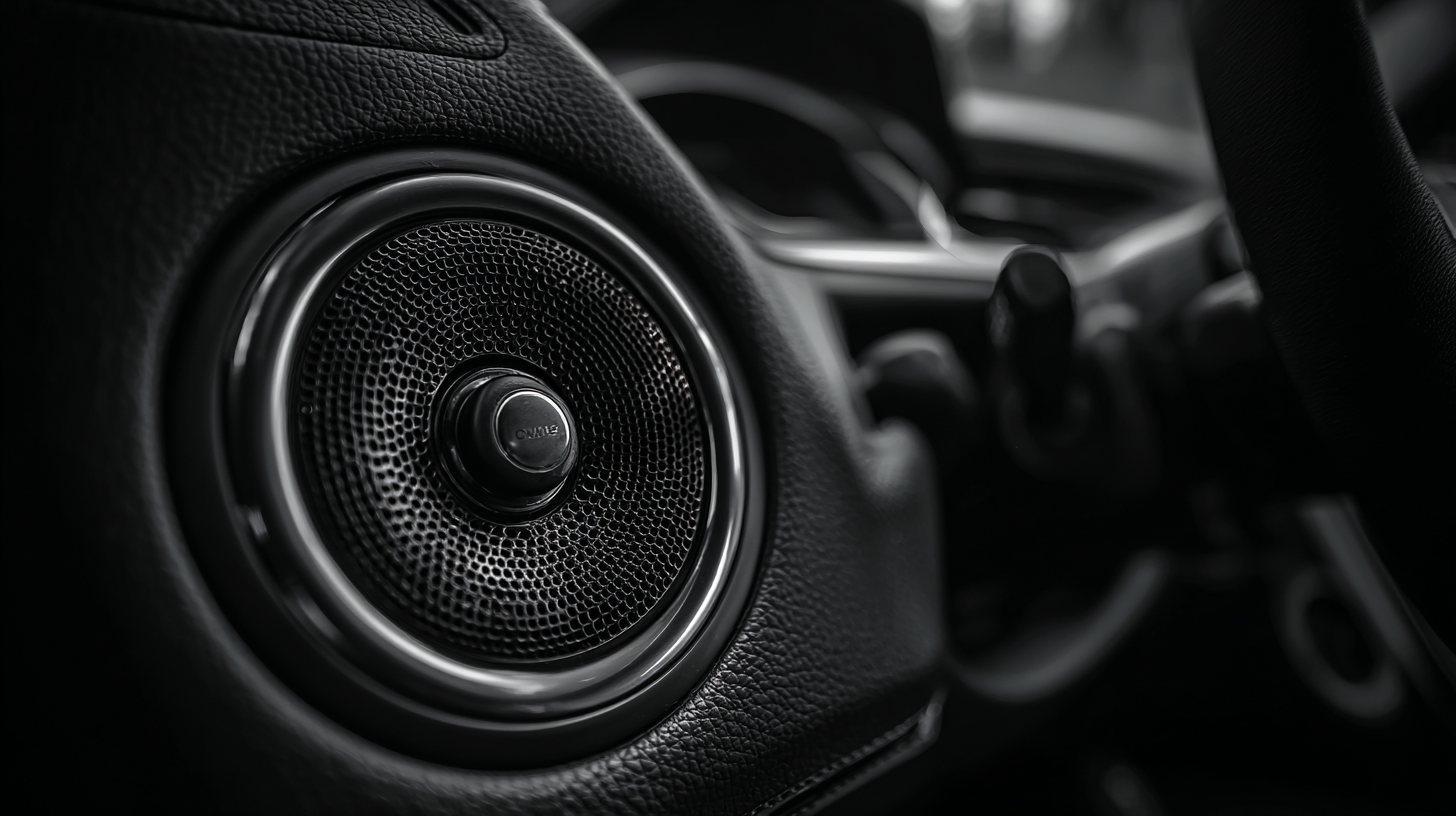In recent years, the automotive audio landscape has undergone significant transformations, driven by advancements in technology and consumer demand for superior sound experiences within vehicles. With the global automotive speakers market projected to reach approximately $17.6 billion by 2026, the innovations in auto speakers have garnered substantial attention from manufacturers and car enthusiasts alike. From integration of high-resolution audio formats to the incorporation of smart technologies such as artificial intelligence and personalized sound settings, today's auto speakers are designed not only for clarity but also for immersive listening experiences. As drivers increasingly seek to enhance their in-car audio environments, this blog will explore the latest innovations that are redefining sound quality in auto speakers, paving the way for a heightened audio journey on the road.

Recent advancements in auto speaker design are significantly enhancing audio performance, driven by the integration of innovative materials and technologies. According to a report by MarketsandMarkets, the global automotive audio market is projected to grow from $23.36 billion in 2021 to $34.74 billion by 2026, underscoring the industry's focus on superior sound quality. A major trend is the transition from traditional cones to composite materials, which not only reduce weight but also improve sound clarity and distortion levels. Brands like Bang & Olufsen and Bose are at the forefront, employing lightweight aluminum and advanced composite materials to achieve a more refined acoustic experience.
Furthermore, the rise of digital signal processing (DSP) is revolutionizing how sound is delivered in vehicles. DSP technology allows manufacturers to tailor audio output to the specific acoustics of a car interior, compensating for factors such as seating positions and ambient noise levels. A study from Research and Markets highlights that DSP integration can enhance sound fidelity by up to 30%, providing a more immersive listening experience. This focus on personalized sound environments is becoming essential as consumers increasingly prioritize high-quality audio in their vehicles. With these innovations, auto speakers are not only providing superior sound quality but are also evolving to meet the demands of modern car enthusiasts.
In recent years, the integration of high-resolution audio formats has transformed the landscape of modern car speakers, catering to an increasingly discerning audience seeking exceptional sound quality. According to a report by the Consumer Technology Association (CTA), 85% of consumers prefer audio playback in higher quality formats, showing a clear demand for innovation in car audio systems. High-resolution audio (HRA) goes beyond the standard CD quality, with formats such as FLAC and DSD offering sampling rates that can reach up to 192 kHz and bit depths of 24 bits. This advancement allows for greater detail and a more immersive listening experience compared to traditional compressed formats.

Car manufacturers and audio brands have responded to this trend by incorporating advanced digital signal processing (DSP) technology and premium speaker components designed to maximize the potential of high-resolution audio. A study by J.D. Power revealed that vehicles equipped with high-fidelity audio systems receive higher customer satisfaction ratings, affirming the importance of sound quality in the overall driving experience. As consumers increasingly seek clarity and depth in their musical enjoyment, the role of high-resolution audio formats in modern car speakers will continue to expand, driving further innovations in automotive sound systems.
Active Noise Cancellation (ANC) technology has gained remarkable traction in the automotive industry, particularly in the development of high-quality sound systems. Recent studies indicate that incorporating ANC can improve the overall driving experience by reducing unwanted ambient noise, allowing for a clearer and more immersive audio experience. According to a report by MarketsandMarkets, the global automotive ANC market is projected to reach USD 1.57 billion by 2026, highlighting a growing recognition of its importance among manufacturers and consumers alike.
The integration of ANC in vehicle sound systems not only enhances audio fidelity but also contributes to passenger comfort. Research from the National Highway Traffic Safety Administration reveals that excessive noise can significantly increase driver fatigue and distraction. By mitigating these distractions, ANC systems enable drivers to maintain focus on the road while enjoying superior sound quality. Additionally, a study by J.D. Power found that vehicles equipped with advanced noise reduction technologies reported a 15% increase in customer satisfaction regarding audio performance, solidifying the benefits of ANC in contemporary automotive sound systems.
| Feature | Description | Impact on Sound Quality | Active Noise Cancellation Effectiveness |
|---|---|---|---|
| Dynamic Sound Control | Automatically adjusts speaker output based on vehicle speed and road conditions. | Enhances clarity and balance across varying environments. | Reduces perceived engine and wind noise, allowing for a richer listening experience. |
| Spatial Sound Technology | Creates a 3D sound experience, simulating surround sound within the vehicle. | Provides an immersive audio experience, particularly for music and entertainment. | Optimizes sound positioning, further enhancing the cancellation of external noise. |
| Advanced Equalization | Uses machine learning algorithms to customize sound profiles based on user preferences. | Personalizes the listening experience, matching individual tastes while optimizing performance. | Works in conjunction with noise cancellation to maintain audio fidelity. |
| Integration with Vehicle Systems | Allows for seamless communication with navigation, voice commands, and car diagnostics. | Enhances usability and convenience in audio management. | Improves clarity of directional audio cues while minimizing background disturbances. |
| Wireless Connectivity | Supports Bluetooth and Wi-Fi for easy streaming and connectivity. | Facilitates a vast array of audio sources without cluttering the vehicle. | Allows noise cancellation to be dynamically adjusted based on the connected device's audio output. |
Recent advancements in speaker materials are revolutionizing the audio industry, particularly in the realm of automotive sound systems. Innovative materials are now being employed to enhance sound clarity and durability. For instance, breakthroughs in piezoelectric nanogenerators are paving the way for more efficient acoustic energy harvesting, resulting in speakers that not only deliver superior audio performance but also boast a longer lifespan.
Additionally, advancements in OLED technology are contributing to the evolution of auto speakers. The introduction of sound OLEDs, which allow for multi-speaker functionality, is pushing the boundaries of how sound can be integrated within vehicles. This integration not only enhances sound quality but also contributes to a more immersive audio experience. As automotive brands focus on creating electric vehicles, there's a growing emphasis on developing audio systems that are not only high-performing but also sustainable, ensuring that sound quality keeps pace with the innovative designs of modern cars.
In recent years, the integration of smart technology in automotive audio systems has revolutionized the way we experience sound in vehicles. According to a report by MarketsandMarkets, the global automotive audio market is projected to reach $51.2 billion by 2025, driven by advancements in technology and consumer demand for enhanced audio experiences. Innovative features such as voice recognition, smartphone connectivity, and advanced digital signal processing (DSP) are now commonplace, allowing drivers to control audio settings seamlessly and enjoy superior sound quality on the road.
One exciting development is the rise of adaptive sound systems that learn user preferences. For instance, these systems can automatically adjust volume levels and equalization settings based on driving conditions and individual listening habits. Additionally, emerging technologies like active noise cancellation are making it possible to create a more immersive audio environment, minimizing external distractions.










